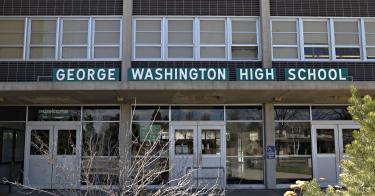America observes Washington’s birthday next week, but fewer schools are named after presidents than there used to be. That’s a longstanding trend, but it picked up steam after George Floyd’s murder in 2020. The Berkeley, Calif., school district removed the names Washington and Jefferson from its schools. The school board in Peoria, Ill., decided to rename schools honoring Washington, Benjamin Harrison, Calvin Coolidge and Theodore Roosevelt. The San Francisco school board tried to strike the names of eight presidents from school buildings but reversed course after vocal objections.
In 1986 more than 6% of all public schools bore the name of a president. Had that rate continued, 6,061 schools would have a president’s name in 2020. Yet our recent analysis found only 4,889 public schools named for presidents—and that was before the post-Floyd renamings.
This decrease isn’t concentrated among schools named after slave-owning presidents. The largest decline came among schools honoring Abraham Lincoln. There were only 602 Lincoln schools in 2020, down from 899 (adjusted for the change in the total number of schools) in 1986. Washington schools fell to 529 from an adjusted 747.
The recent flurry of name-changing is unusual. Typically, old schools close and new ones open with different names. And it’s not that “dead white men” have given way to “diverse” heroes like Martin Luther King, Cesar Chavez or Rosa Parks. We searched for schools bearing the names of 26 prominent civil-rights leaders and could only find 273 in 2020. That’s 191 more than the adjusted 1986 count, but a small fraction of the 1,172 decrease in schools named after presidents.
The biggest increases are in inoffensive school names that describe natural features, such as Owl Creek in Fayetteville, Ark., and abstract ideas, like the Achievement, Integrity and Maturity school in Alexandria, Va. They are meant to be pleasing like a spa, or vaguely uplifting like a motivational poster, but they don’t represent a serious effort to convey values to children that schools named after presidents or other accomplished figures might.
The decline in naming schools after presidents doesn’t reflect an ebbing of patriotism in the general population. A 2017 review of decades of polling on American patriotism produced by the American Enterprise Institute found no marked decline in patriotism in the U.S. since the 1980s. As the popular pushback against changing school names in San Francisco demonstrates, traditional patriotic school names have a significant base of political support, even in liberal cities.
Keeping the names of presidents on schools depends on school boards’ political courage. Standing up to the woke mob is important so children can learn that American leadership is something to be honored and emulated.
This piece originally appeared in the Wall Street Journal on February 16, 2023




